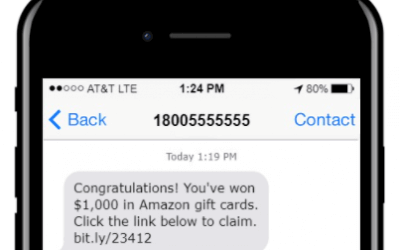Sending text messages to your customers can be a great channel of communication to include in your business plan.
We have briefly touched on other SMS best practices in the past, but in this one, we would like to go in depth on link shortening in SMS.
What is link shortening?
The practice of link shortening is common on platforms that have character limits. Link shortening takes a long link (such as https://www.youtube.com/watch?v=bQokb4OmaOo&ab_channel=SesameStreet) and converts it to something like this: https://rb.gy/p80jte
Why is link shortening useful?
Shortening a link on platforms with character limits frees up valuable space for other text! For example, the character limit on Twitter is now 280 characters.
If you wanted to tweet out the above Sesame Street Youtube link, it would cost you 68/280 characters.
By contrast, the shortened URL would only cost 20 characters while leading to the same video.
What about link shortening in text messages?
SMS stands for “Short Message Service” and has a limit of 160 characters per SMS. In the above example, sending an SMS with the full youtube link would use up 68 of the 160 characters you have available in a text message, while the shortened link would use just 20.
This brings us to the main point of this article: As a business using SMS to engage with your audience, should you use shortened links in text messages?
The answer is not as clear cut as it might seem. In many cases, especially if the link you’re sending is well known one (such as simply facebook.com or youtube.com) you are probably better off just using the link itself.
However, if you are sending a URL that might have a large URL such as the example below, it might make sense to use a URL shortener.

What are the drawbacks of using link shorteners?
The main criticism people tend to have about link shortening is that they’re unsafe. Basically, the real link is hidden behind the shortened link. A lot of spammers use link shorteners to hide the real destination and trick people into going to dangerous websites.
The biggest drawback of using link shorteners in your SMS marketing is being mistaken for a spammer.
The best way to avoid being mistaken for a spammer is using SMS best practices and ensuring that every contact you message has given express written permission and is expecting to receive text messages for your business.
You can refer to our SMS Compliance Guide for more information on the rules and regulations surrounding text messaging.
Branded Short URLs
Another great way to ensure you don’t get mistaken for spam is to use your own short branded URL. This is usually a domain with four or less characters that is owned by you for the express purpose of creating short links.
For example, the branded short URL for Texting.io is txt.fo. We allow users of our application to use this to shorten the URLs they send in their SMS automatically.

If you use a mass texting service like Texting.io, you always have the option of using our build in URL shortener.
If you are looking to create your own branded short URL, there are a number of services that allow you to do so.
Conclusion
In conclusion, shortening your links in SMS can be a good idea when the link you’re trying to send is very long, or if you’re using a branded short domain instead of a commercial shortener like bit.ly
Related Articles
How to Block Spam Texts
Spam texts are an unfortunate reality of the modern world. If you’re wondering exactly what spam texts are, and how to tell them apart from legitimate businesses using SMS, check out this blog post. In this post, we will explore different ways you can block...
What is a Spam Text Message?
With the popularity of text marketing increasing, spam text messages inevitably increase alongside it. With that, it becomes important to distinguish between regular texts sent out by legitimate businesses and spam texts sent out by bad actors. First off, there are 2...





